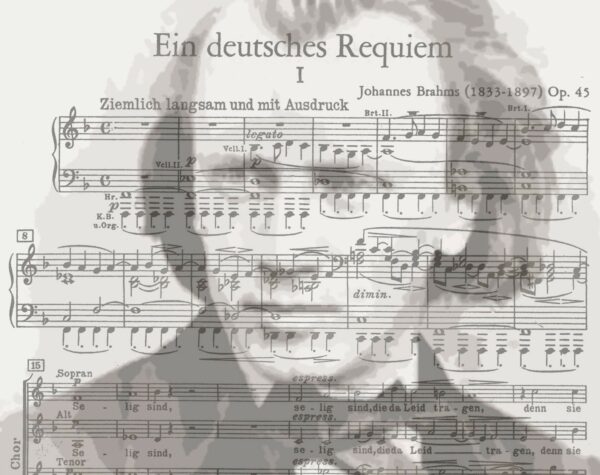Alex Weiser’s and all the days were purple features a collection of such gems in Yiddish and English from poets Anna Margolin, Edward Hirsch, Rachel Korn, Abraham Sutzkever, and Mark Strand. The cycle is bookended with two songs setting Anna Margolin poems that act as a kind of prelude and postlude. Each Anna Margolin poem reflects on life from the perspective of being after or outside of it. Instrumental sections separate these two songs from the four others, which reflect on life from within its tumult, longing, beauty, and difficulty.
I. Mayn Glik (My Joy) | מײַן גליק
*
אַננאַ מאַרגאָלין
:געװען איז אפֿשר דאָס מײַן גליק
פֿילן װי דײַנע אויגן
.האָבן זיך פֿאַר מיר געבויגן
:ניין, געװען איז דאָס מײַן גליק
גיין שװײַגנדיק הין און הער
.מיט דיר איבערן סקװער
:ניין, ניט דאָס, ניט דאָס, נאָר הער
װען איבער אונדזער פֿרייד
.פֿלעגט שמייכלענדיק זיך אײַנבויגן דער טויט
,און אַלע טעג זײַנען געװען פּורפּורן
.און אַלע שװער
*
Anna Margolin, Translation by Shirley Kumove
Perhaps this was my happiness: to feel how your eyes
bowed down before me.
No, rather this was my happiness: to go silently back and forth across the square with you.
No, not even that, but listen:
how over our joy
there hovered the smiling face of death.
And all of the days were purple and all were hard.
III. I was never able to pray
I Was Never Able To Pray
Edward Hirsch
Wheel me down to the shore
where the lighthouse was abandoned and the moon tolls in the rafters.
Let me hear the wind paging through the trees and see the stars flaring out, one by one,
like the forgotten faces of the dead.
I was never able to pray,
but let me inscribe my name in the book of waves
and then stare into the dome
of a sky that never ends
and see my voice sail into the night.
IV. Benkshaft (Longing) | בענקשאַפֿט
בענקשאַפֿט
רחל קאָרן
,ס′זענען מײַנע חלומות אַזוי פֿול מיט בענקשאַפֿט
אַז ס′שמעקט אַיעדן אינדערפֿרי
מײַן לײַב מיט דיר ־
און ס′טרינקט צו פּאַמעלעך אויף מײַן ציינפֿאַרקלעמטער ליפּ
,דער איינציקער סימן פֿון דערשטיקטן טרויער
.אַ טר ָאפּן בלוט
און ס′גיסן שוין איבער די שעהען, װי כּוסות
,איינע אין דער צװייטער
די האָפֿענונג, װי טײַערן װײַן ־
,אַז דו ביסט נישט װײַט
אַז אָט, אַיעדע רגע
.קענסטו קומען, קומען, קומען
Longing
Rachel Korn, Translation by Ruth Whitman
My dreams are so full of longing
that every morning
my body smells of you –
and on my bitten lip there slowly dries the only sign of suffering,
a speck of blood.
And the hours like goblets pour hope, one into the other,
like expensive wine:
that you’re not far away,
that now, at any moment, you may come, come, come.
V. Poezye (Poetry) | פּאָעזיע
פּאָעזיע
אברהם סוצקעװער
אַ טונקל פֿיאָלעטע פֿלוים
,די לעצטע אויפֿן בוים
,דין־הײַטלדיק און צאַרט װי אַ שװאַרצ ַאפּל
װאָס האָט בײַ נאַכט אין טוי געלאָשן
,ליבע, זעונג, צ ַאפּל
און מיטן מאָרגן־שטערן איז דער טוי
געװאָרן גרינגער ־־
דאָס איז פּאָעזיע. ריר זי אָן אַזוי
.מען זאָל ניט זען קיין סימן פֿון די פֿינגער
Poetry
Abraham Sutzkever, Translation by Chana Bloch
A dark violet plum,
the last one on the tree,
thin-skinned and delicate as the pupil of an eye, that in the dew at night blots out
love, visions, shivering,
and then at the morning star the dew
grows weightless:
That is poetry. Touch it so lightly
that you don’t leave a fingerprint.
VI. Lines for Winter
Lines for Winter
Mark Strand
for Ros Krauss
Tell yourself
as it gets cold and gray falls from the air
that you will go on
walking, hearing
the same tune no matter where
you find yourself—
inside the dome of dark
or under the cracking white
of the moon’s gaze in a valley of snow. Tonight as it gets cold
tell yourself
what you know which is nothing
but the tune your bones play
as you keep going. And you will be able
for once to lie down under the small fire
of winter stars.
And if it happens that you cannot
go on or turn back
and you find yourself
where you will be at the end,
tell yourself
in that final flowing of cold through your limbs that you love what you are.
VIII. Mir zaynen gegangen durkh teg (We Went Through the Days) | מיר זײַנען געגאַנגען דורך טעג
*
אַננאַ מאַרגאָלין
.מיר זײַנען געגאַנגען דורך טעג װי דורך שטורעם־דורכציטערטע גערטנער
.געבליט און גערײַפֿט און געאיבט זיך אין שפּילן מיט לעבן און טויט
.כמאַרע און ברייטקייט און טרוים איז געװעזן אין אונדזערע װערטער
און צװישן פֿאַרעקשנטע ביימער אין זומערדיק־רוישנדע גערטנער
.האָבן מיר זיך פֿאַרצװײַגט אין איין איינציקן בוים
,און אָװנטן האָבן געשפּרייט זיך מיט שװערע פֿאַרטונקלטער בלויקייט
,מיטן שמערצלעכן גלוסטן פֿון װינטן און פֿאַלנדע שטערן
,מיטן בלאָנדזשענדן לאַשטשענדן שײַן איבער צוקנדע גראָזן און בלעטער
און מיר האָבן פֿאַרװעבט זיך אין װינט, אײַנגעז ַאפּט זיך אין בלויקייט
.און געװען װי די גליקלעכע חיות און װי קלוגע און שפּילנדע געטער
*
Anna Margolin, Translation by Shirley Kumove
We went through the days as through storm-tossed gardens. Blossoming, maturing; mastering the game of life and death. Clouds, vastness, and dreams were in our words.
Among stubborn trees in a rustling summer garden
we fused into a single tree.
Evenings spread their deeply darkened blue,
with the aching desire of winds and falling stars,
with shifting, caressing glow of fluttering leaves and grasses, we wove ourselves into the wind, merged with the blueness like happy creatures and clever, playful gods.



 I’m proud of what we’ve accomplished as an organization over the years and how we’ve been an innovative force in the Canadian music scene. Some highlights have been the many Saskatchewan and Canadian musicians and music we’ve featured, our growing presence in the community, and simply daring to try new things and making them work. Part of this is creative momentum and I strongly believe new ideas and fresh perspectives are paramount to artistic growth. That’s why I’m very excited in passing the torch to new musical leaders and seeing how they contribute to the future of the SSO.
I’m proud of what we’ve accomplished as an organization over the years and how we’ve been an innovative force in the Canadian music scene. Some highlights have been the many Saskatchewan and Canadian musicians and music we’ve featured, our growing presence in the community, and simply daring to try new things and making them work. Part of this is creative momentum and I strongly believe new ideas and fresh perspectives are paramount to artistic growth. That’s why I’m very excited in passing the torch to new musical leaders and seeing how they contribute to the future of the SSO.











